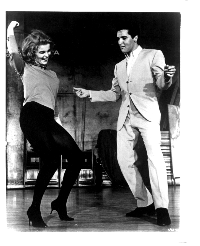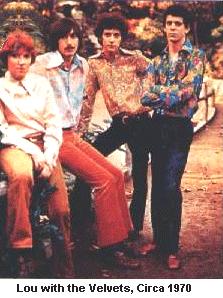

PETER, PAUL, and MARY, *
India is the home not only of vegetarian cooking, but also of the science of healthful living. The scripture known as the Ayur-veda, is the oldest known work on biology, hygiene, medicine, and nutrition. This branch of the Vedas was revealed thousands of years ago by Sri Bhagavan Danvantari, an incarnation of Krishna. "Old", is not the same as "primitive", however, and some of the instructions of the Ayur-veda will remind today's reader of modern nutritional teachings or just plain common sense. Other instructions may seem less familiar, but they will bear themselves out if given the chance.
We shouldn't be surprised to see bodily health discussed in spiritual writings. The Vedas consider the human body a divine gift, a chance for the imprisoned soul to escape from the cycle of birth and death. The importance of healthful living in spiritual life is also mentioned by Lord Krishna in the Bhagavad-gita (6.16-17), "There is no possibility of becoming a yogi, O Arjuna, if one eats too much or eats too little, sleeps too much or does not sleep enough. One who is temperate in his habits of eating, sleeping, working, and recreation can mitigate all material pains by practicing the yoga system."
Proper eating has a double importance. Besides its role in bodily health-over-eating, eating in a disturbed or anxious state of mind, or eating unclean foods causes indigestion, "the parent of all diseases"-proper eating can help the aspiring transcendentalist attain mastery over his senses. "Of all the senses, the tongue is the most difficult to control," says the prasada-sevaya, a song composed by Srila Bhaktivinoda Thakura, one of the spiritual predecessors of Srila Prabhupada, "but Krishna has kindly given us this nice prasada to help us control the tongue."
Here are a few guidelines for good eating taken from the Ayur-veda and other scriptures.
Spiritualize your eating The Bhagavad-gita (17.8-10) divides foods into three classes: those of the quality of goodness, those of the quality of passion, and those of the quality of ignorance. The most healthful are the foods of goodness. "Foods of the quality of goodness [milk products, grains, fruits, and vegetables] increase the duration of life; purify one's existence; and give strength, health, happiness, and satisfaction. Such foods are sweet, juicy, fatty, and palatable."
Foods that are too bitter, sour, salty, pungent, dry or hot, are of the quality of passion and cause distress. But foods of the quality of ignorance, such as meat, fish, and fowl, described as "putrid, decomposed, and unclean," produce only pain, disease, and bad karma. In other words, what you eat affects the quality of your life. There is much needless suffering in the world today, because most people have no other criterion for choosing food than price and sensual desire.
The purpose of food, however, is not only to increase longevity and bodily strength, but also to purify the mind and consciousness. Therefore the spiritualist offers his food to the Lord before eating. Such offered food clears the way for spiritual progress. There are millions of people in India and around the world who would not consider eating unless their food was offered first to Lord Krishna.

ELVIS and ANN MARGARET in VIVA LAS VEGAS *

VELVET UNDERGROUND circa '69
My imagination had prepared me a little bit for the visual experience, but I was entirely unprepared for the almost unbearable smell that permeated the entire plant.
After brief "pleasantries" with Jerry, the production manager of the plant, I was allowed to procede through the building unguided and at my own pace. I began the tour "where it all starts", as Jerry put it, in the "kill shed".
I entered the kill shed through a short, tunnel-like hall through which I could see what I soon learned was the third butchering station. The kill shed consisted of one room in which a number of operations are performed by one or two of six butchers at four stations along the length of the room. In the kill shed there is also a United States Department of Agriculture (USDA) inspector who examines parts of every animal who goes through the kill shed.
The first station is the killing station. It is worked by one man whose job is to herd the animal into the killing stall, slaughter him or her, and begin the butchering process. This stage of the process takes about ten minutes for each animal, and begins with the opening of a heavy steel door that separates the killing stall from the waiting chute. The man working this station must then go into a corridor adjacent to the waiting chute, and prod his next victim into the killing stall with a high-voltage electric cattle prod.
This is the most time-consuming part of the operation because the cattle are fully aware of what lies ahead, and are determined not to enter the killing stall. The physical symptoms of terror were painfully evident on the faces of each and every animal I saw either in the actual killing stall or in the waiting chute. During the 40 seconds to a minute that each animal had to wait in the killing stall before losing consciousness, the terror became visibly more intense. The animal could smell the blood, and see his or her former companions in various stages of dismemberment. During the last few seconds of life, the animal thrashes about the stall as much as its confines allow. All four of the cows whose deaths I witnessed strained frantically, futilely, and pathetically towards the ceiling -- the only direction that was not blocked by a steel door. Death came in the form of a pneumatic nail gun that was placed against their heads and fired.
The gun is designed so that the nail never completely leaves the gun, but simply is blown into the animal's head and then pulled out by the butcher as the animal collapses. Three of the four times I saw it used, it did the job on the first try, but one cow struggled a good deal after collapsing. After the animal has collapsed, the side of the killing stall is raised, and a chain is secured to the right hind leg. The cow is then hoisted by that one leg to a hanging position. At this point, the butcher drains the body of blood by slitting the cow's throat.
When the blood vessels are severed, there is an amazing torrent of blood so profuse that the butcher is unable to step aside fast enough to avoid being covered with it. This steaming torrent of blood lasts only about 15 seconds, after which the only task left to the man at the first station is to skin and remove the animal's head.
At the second station in the kill shed, the headless animal is dropped to the floor. The body is propped up on the back and relieved of hooves and, if female, milk sack and udders. At this time, any urine and feces that didn't drain from the body during the first few seconds of death now pour freely onto the floor. The body is then slit down the middle, and the hide is peeled partially away. A yoke is then hooked to the stumps of the hind legs, the body is lifted upwards, and the rest of the hide is pulled past a roller secured to the floor and peeled off. The animal's body is now at the third station of the kill shed where it is gutted and then sawed in half -- becoming two "sides of beef".
The sides of beef are sprayed down and weighed at the fourth and final station of the kill station. They are then placed in the cooling locker where the residual warmth of life steams away slowly in preparation for the deep-freeze storage locker. From the cooling locker, the meat goes into a main storage area where it is kept for as long as a week. This locker exits to a butchering area where the sides of beef are reduced to parts for the supermarket which end up on dining room tables.
The final stop on my tour was the sausage and hot dog production facilities. It is often said that if you could see what goes into a hot dog, you'd never eat one eat one again. Well that adage applies tenfold to the production of sausage. The most violently nauseating smell that I have ever experienced was the odor wafting up from the sausage meat boiling vats.
As I left the complex, I was embarrassed about my previous skepticism, and I encourage anyone who has any of the doubts that I once possessed to make a visit to a slaughterhouse or spend a day at a factory farm. I think it would become clear that there has to be better way to feed ourselves, and that it is our duty as moral beings to pursue the alternatives.
Dave Gifford is a student at Trinity College in Hartford, Connecticut. This comment was reprinted from "The Forum", the school's student newspaper.
url for the homepage -
https://www.angelfire.com/vt2/70sinvasion